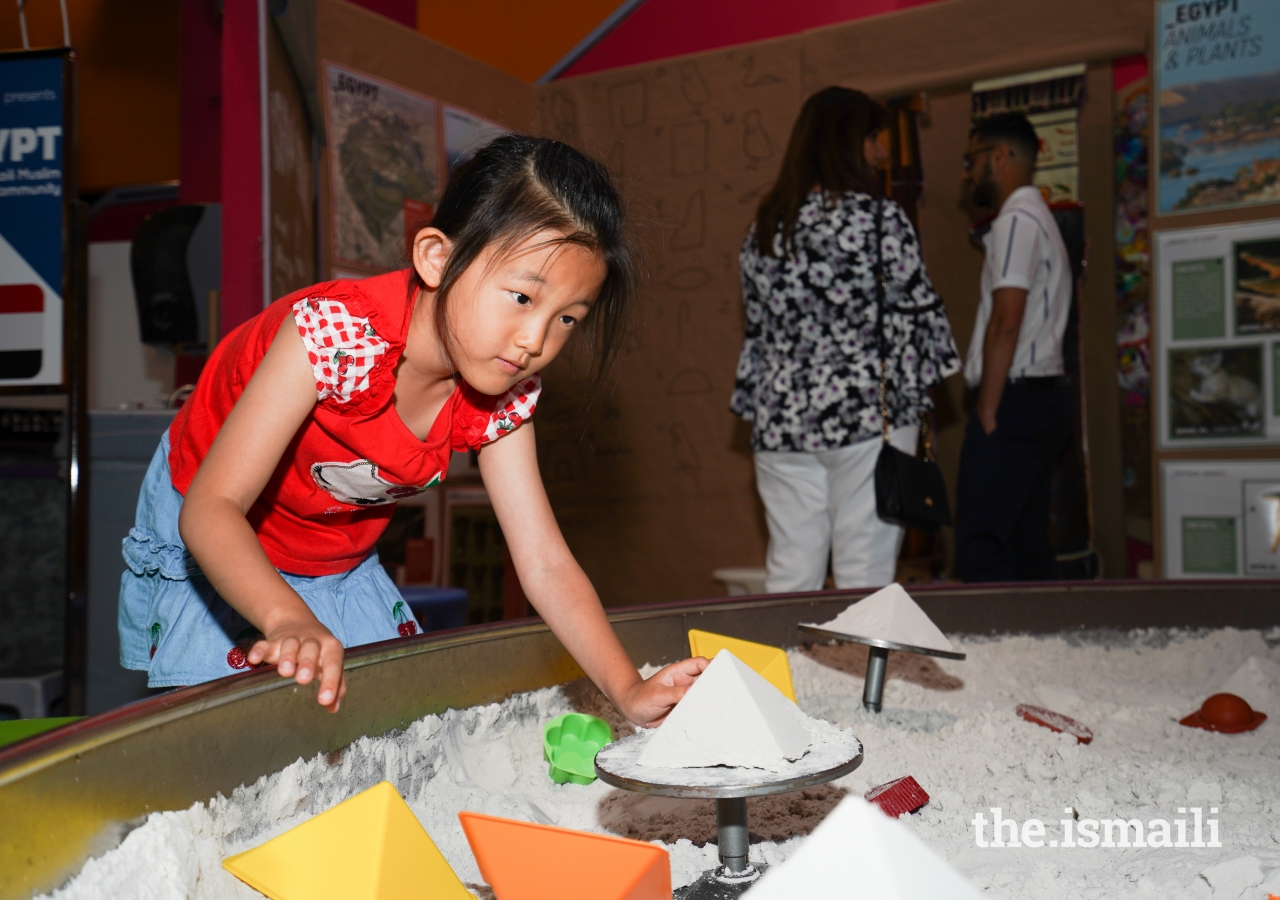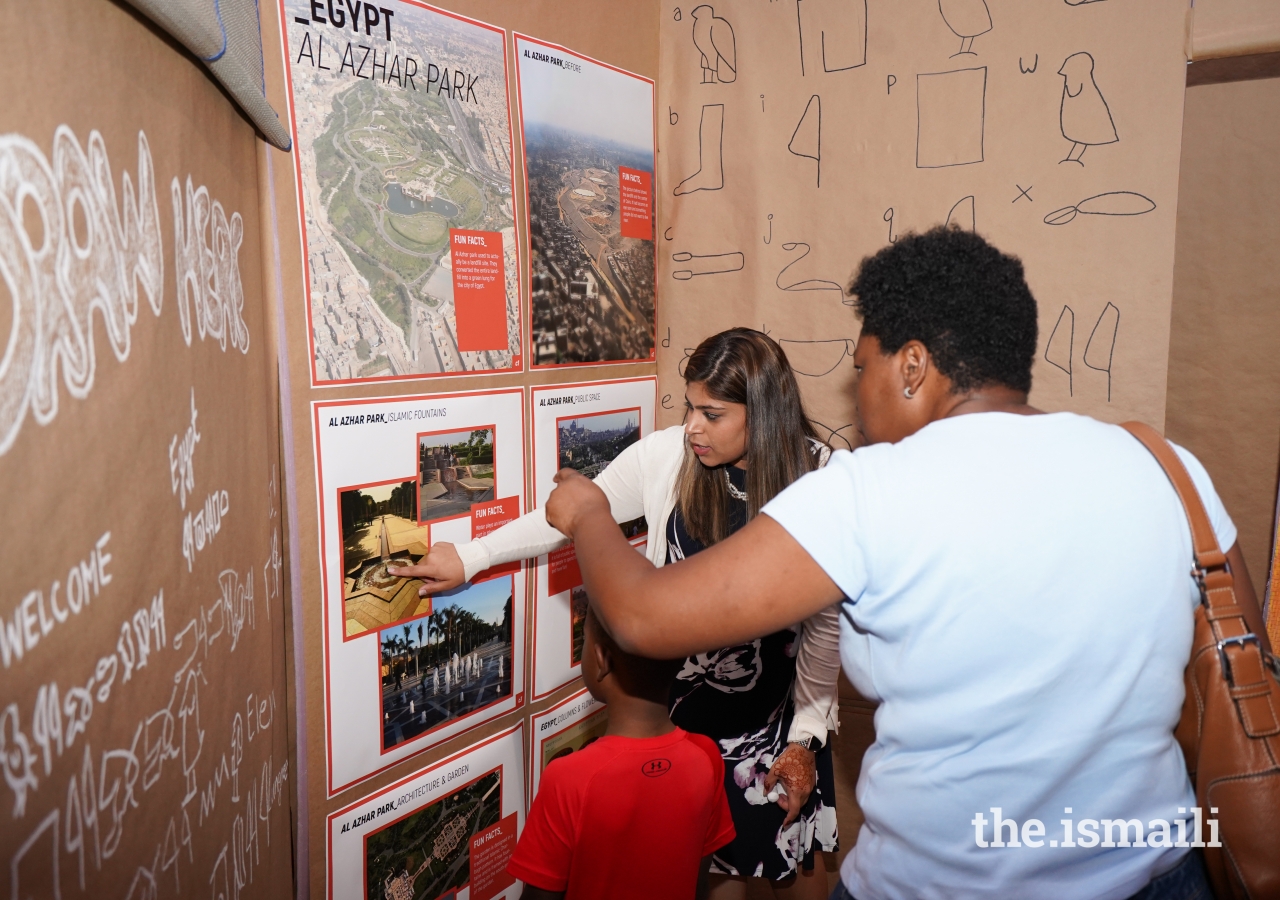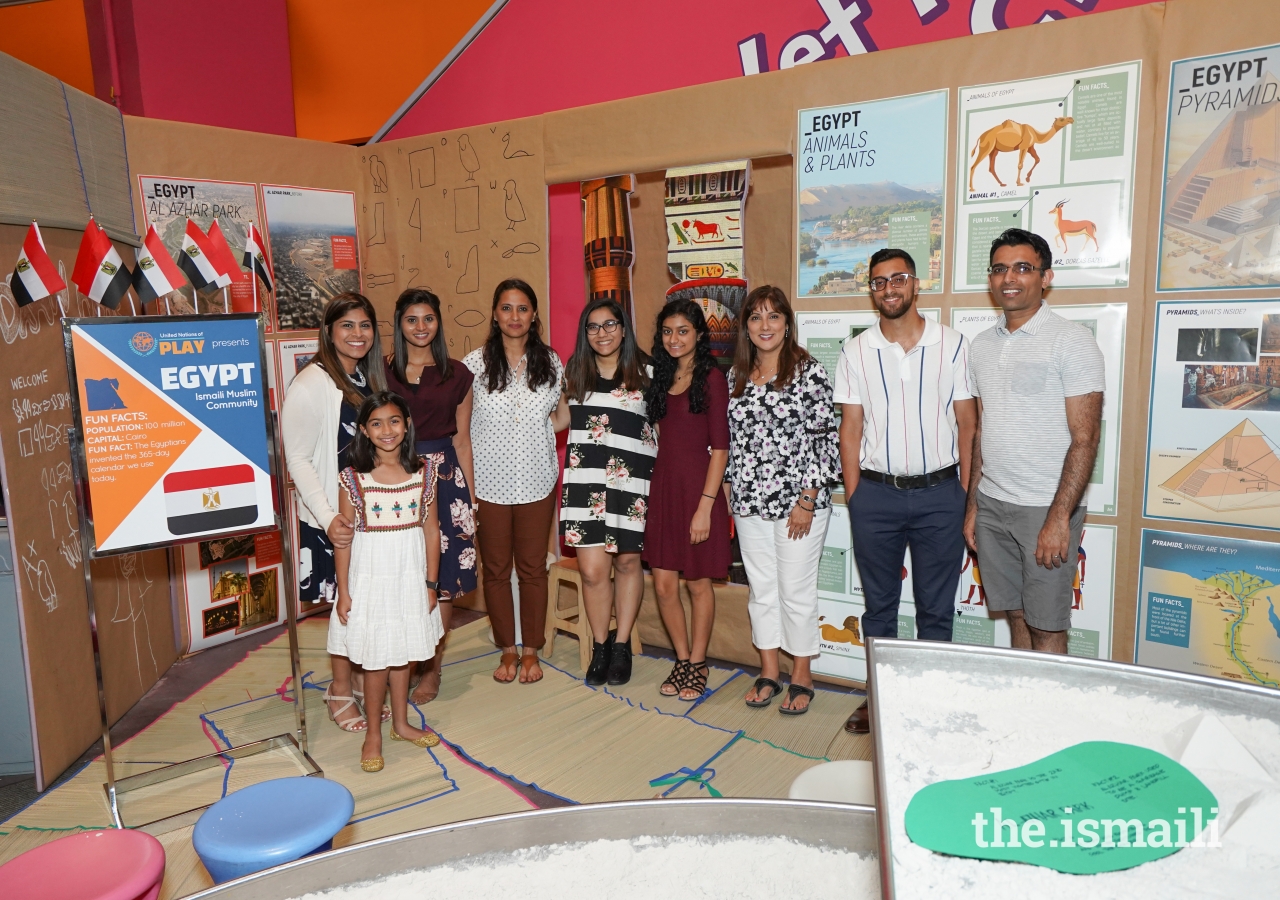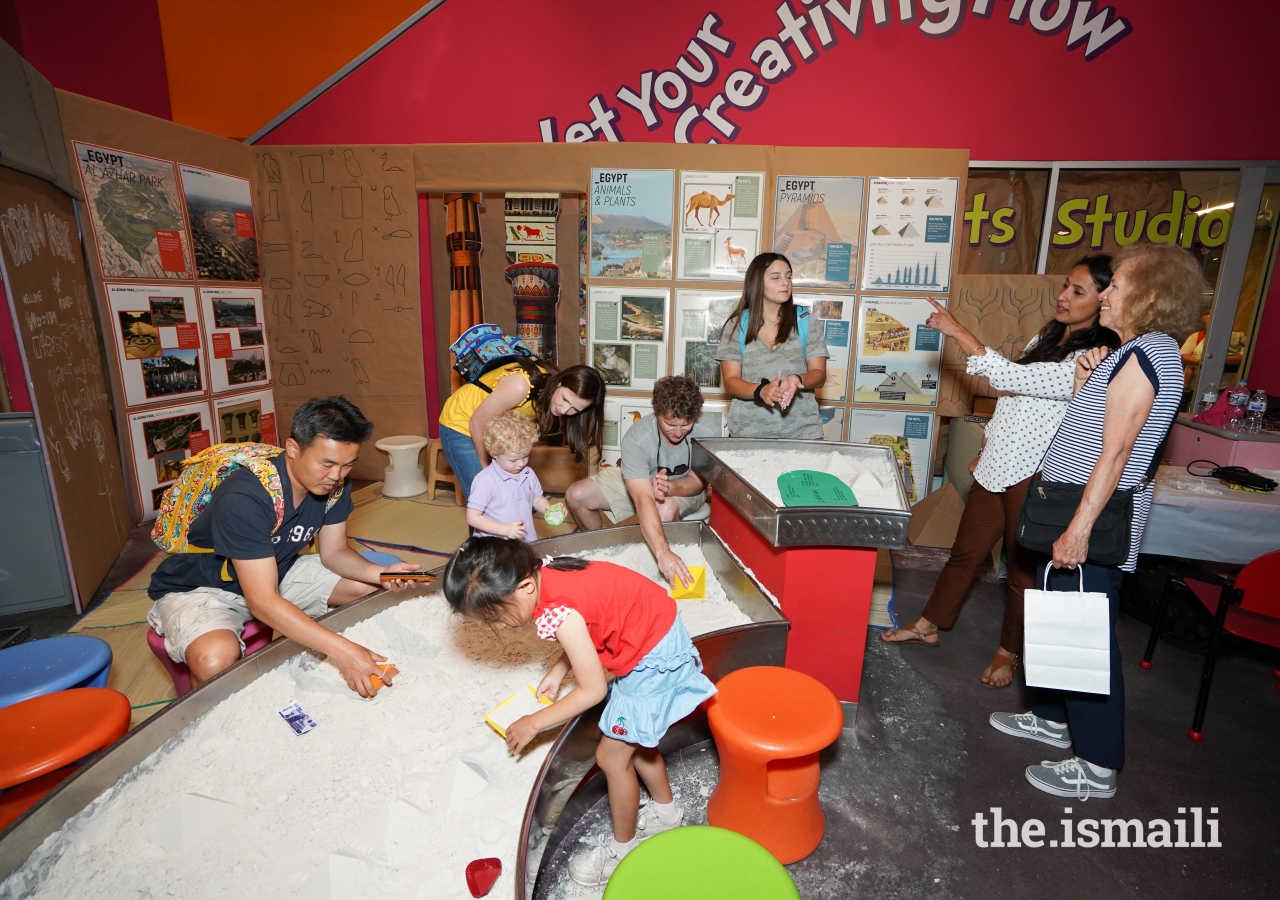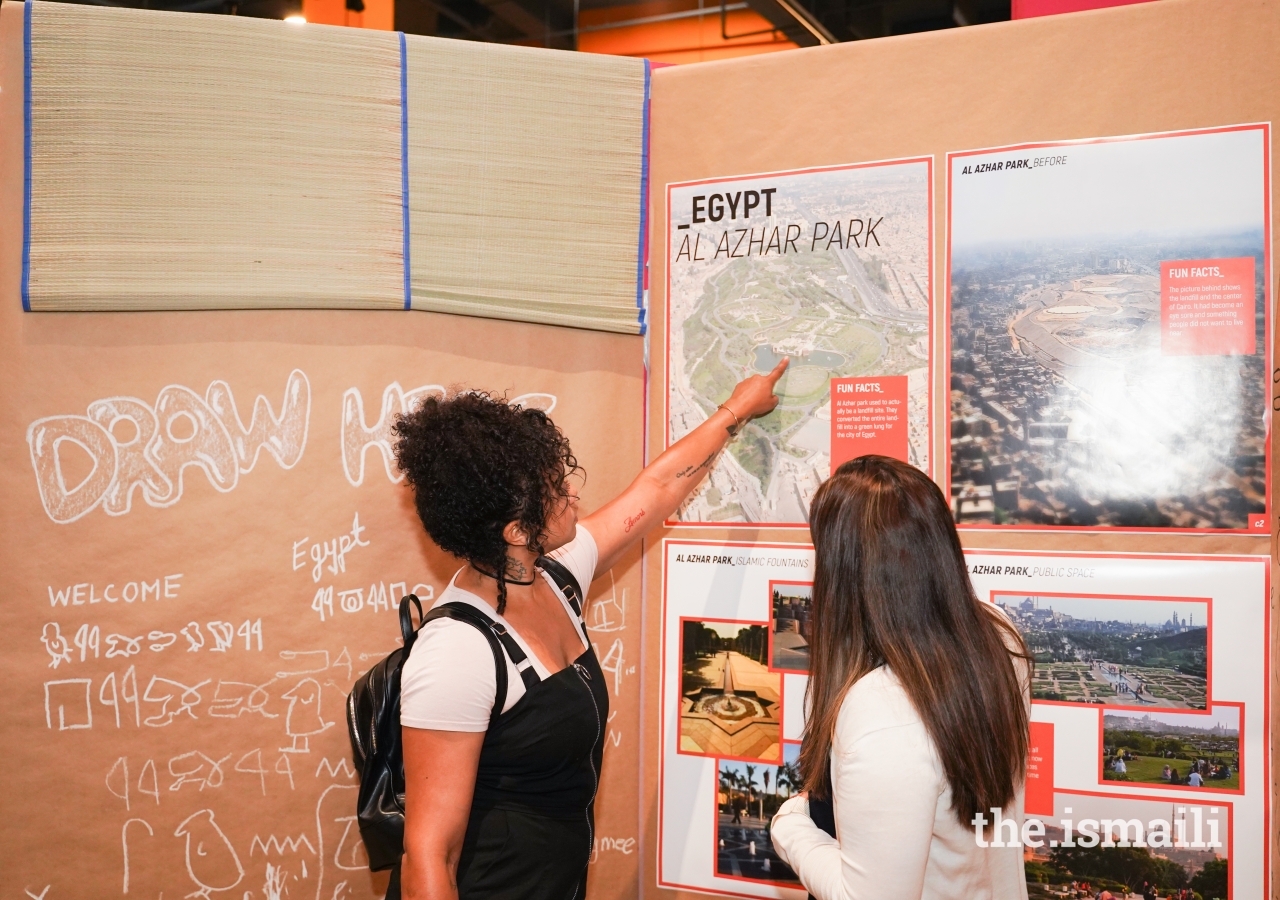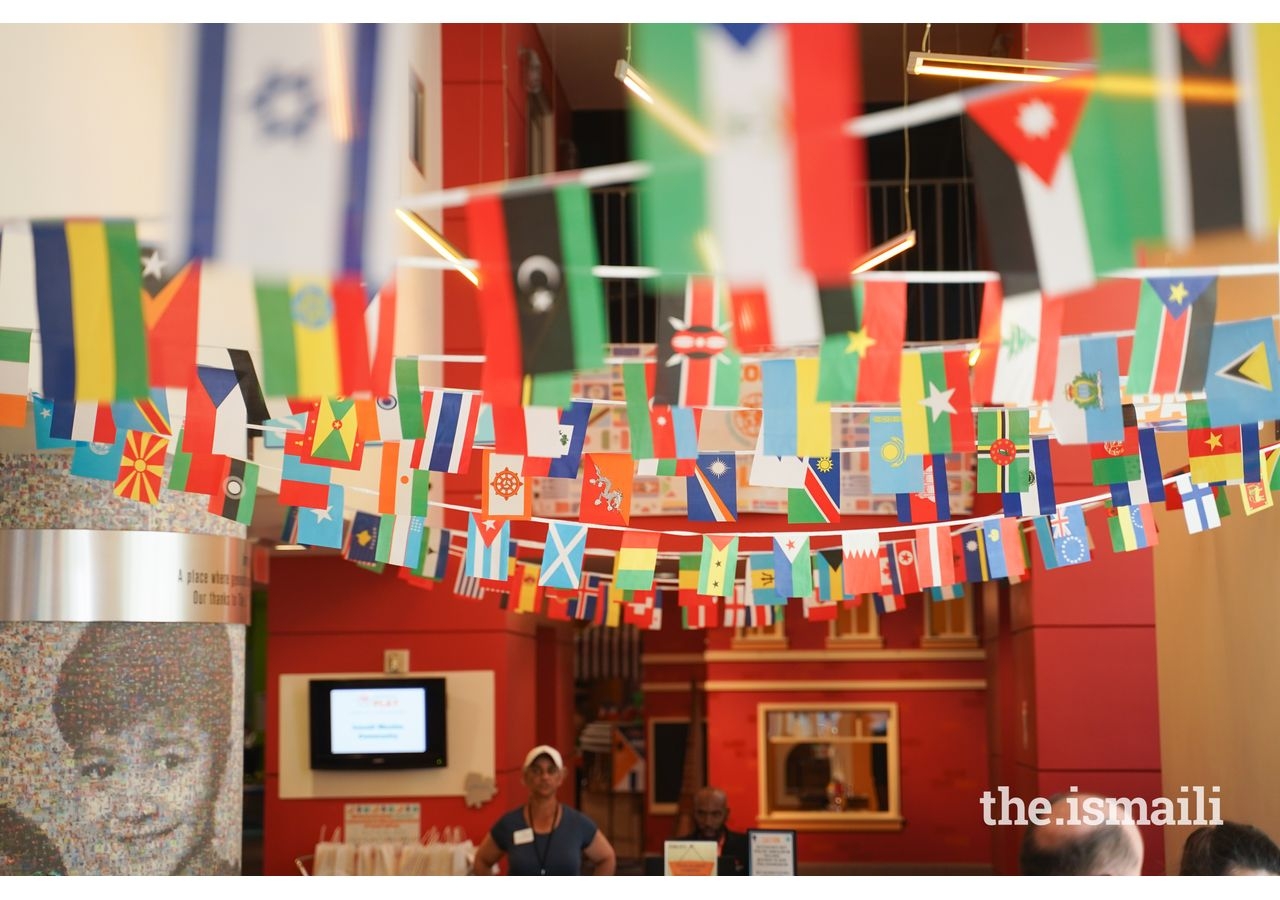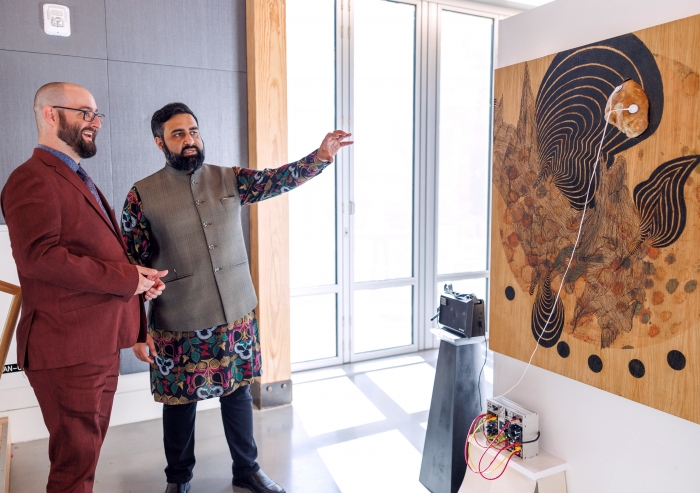As part of the global exhibition, volunteers from the Ismaili community showcased Egypt’s legacy of ancient Egyptian influence, and shone a spotlight to its cultural history. Children thoroughly enjoyed a hands-on experience, building pyramids with sand, learning about hieroglyphics, and Egyptian culture. The Egypt exhibit also featured a henna art booth. Jamati volunteers engaged visitors with fun facts and thought-provoking questions about Al-Azhar Park in Cairo, a prominent feature of the exhibit.
The architect of the Egypt exhibit, Farhaan Samnani, aimed to create a space that “educates and informs youth about Egypt and the Aga Khan Development Network’s work and exposes visitors to different cultures and significant sites, like Al Azhar Park.” He hoped the exhibit would provide a glimpse of what life might be like in other parts of the world.
Visitors particularly found intriguing the Aga Khan Trust for Culture’s (AKTC) transformation of “Garbage City." Christina Deigni, a former resident of Cairo, described the 74-acre green space as “a true gift of nature,” additionally preserving and beautifying the nearby dilapidated area, Al-Darb Al-Ahmar. One visitor, Misha Thompson, appropriately described Al-Azhar Park as “the treasure beneath the trash,” underlining the Park’s profound development into the second-most visited attraction in Cairo.
Valdeline Roberts visited the museum with her granddaughter and remarked that Al-Azhar Park “does a lot that people can learn from, and the park sends a positive message to local residents and outside visitors.” This AKTC initiative serves as an example of Mawlana Hazar Imam’s aspirations to improve residents’ quality of life by creating sustainable community spaces and positively impacting surrounding environments.
Laquita Green, a Museum staff member, expressed great admiration for the exhibit. She believed she might not have ever learned about AKDN’s restoration efforts or Islam’s historical influence in Egypt, without the involvement of the Ismaili community.
The Children’s Museum’s Director of Exhibits and Education, Karen Kelly, showed great appreciation for the Ismaili Council for the Southeast and the Ismaili community for its continued commitment. The Children’s Museum and the Jamat have collaborated annually towards various cultural events, such as Navroz and Eid Festivals. This inclusion enhanced the Museum's goals to expose children and families to the arts, culture, and education, providing diverse experiences to young minds to develop as global citizens. Kelly added that participation at the United Nations of Play “illustrated the community’s willingness to collaborate, its authenticity, and its dedication to showcasing different cultures and traditions."

